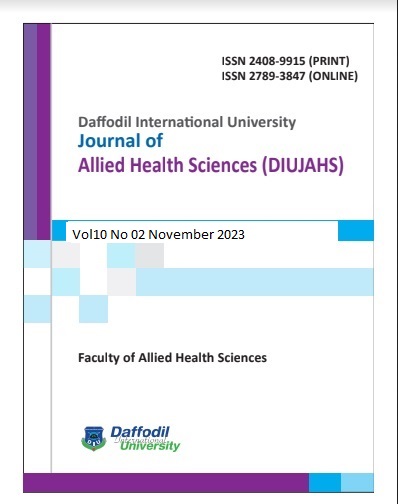Invisible Scars: Understanding Discrimination faced by COVID19 infected people in Kushtia, Bangladesh
DOI:
https://doi.org/10.36481/diujahs.v10i2.b17at094Keywords:
COVID-19, Pandemic, Infected, Discrimination, Bangladesh.Abstract
The COVID-19 pandemic has revealed and escalated different forms of discrimination, especially in vulnerable populations such as Bangladesh. This study tries to uncover the experiences of discrimination among people infected with COVID-19 in the Kushtia district. To achieve this goal, this research adopted a qualitative Interpretative Phenomenological Approach (IPA) and conducted 15 in-depth interviews with individuals who were infected with COVID-19. By integrating a data-driven inductive and deductive strategy, the author coded and analyzed the data using a thematic method. The data analysis step was streamlined using the Granheim model
and NVivo 14 software, which allowed for more efficient concurrent processing and coding. Through qualitative analysis, the study reveals five key themes: social discrimination; workplace discrimination; family discrimination; health discrimination; and relational stigmatization. This research is not just about documenting discrimination but also about using the findings to foster a more inclusive, supportive, and resilient society in Kushtia and beyond.

